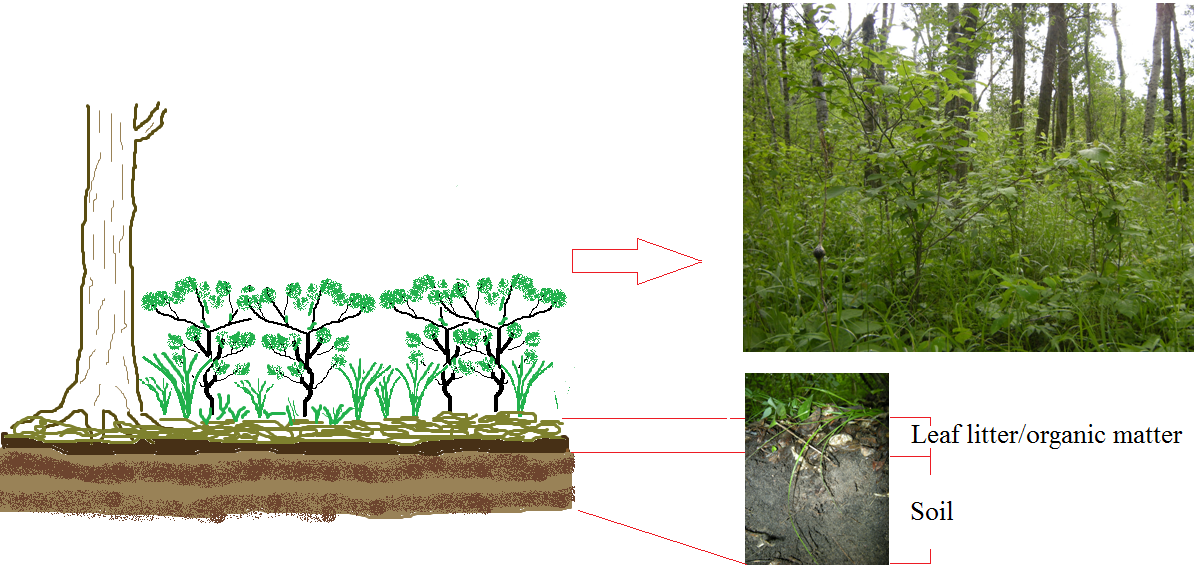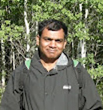NEWS | June 16, 2012
Forest Sampling

Diagram and photos of forest vegetation.
Aspen trees (deciduous forest) comprise more than 90% of the sampled SMAPVEX12 forest sites, with an understory layer of shrubs and grass. The dense shrubs make it difficult to access the sites, therefore the soil moisture and vegetation sampling schemes adopted for these sites are different from the cropland sites. A representative circular area of 200 meter diameter is selected for each forest site and within this area intensive ground measurements of soil moisture and vegetation are made.

Even though my research is not directly associated with forested areas it was great to visit these sites along with other team members and get experience of actual conditions, from which to derive the scientific basis for emission and scattering mechanisms responsible for active and passive signals captured by the PALS airborne instrument (and later SMAP).
The diagram shows a conceptual view of the vertical cross section of forest cover structure along with actual photographs of the vertical soil profile of a location in site F3 and the overlying vegetation condition. The top layer of soil is the leaf litter/organic matter. The new thing for me was that the soil moisture probe was showing a very high moisture reading (usually > 0.4 cm3/cm3) even though the soil didn’t appear that moist. After discussing this with Mike Cosh (USDA) I came to understand that due to the high organic matter content in the soil the standard reading is usually high and the probe needs to be recalibrated to properly relate the dielectric constant measured to the correct soil moisture value for the specific soil.
It is a very difficult task to theoretically model the complex structure shown in the diagram. The in situ soil moisture measurements taken synchronous with the PALS overflights will allow us to test the sensitivity of the active and passive microwave L-band signatures to soil moisture in the presence of different types of vegetation. Hence these measurements are very important in developing operational soil moisture algorithms and especially to verify and demonstrate the potential of SMAP to map soil moisture under thick vegetation.
It was also very helpful to have discussions with my fellow sampling team members; Mariko (modeling forest using electromagnetic scattering theory), Vanessa (SMAP product applications), Kaighin (studying active passive mechanisms) and Mathew (interested in forest vegetation optical depth).




